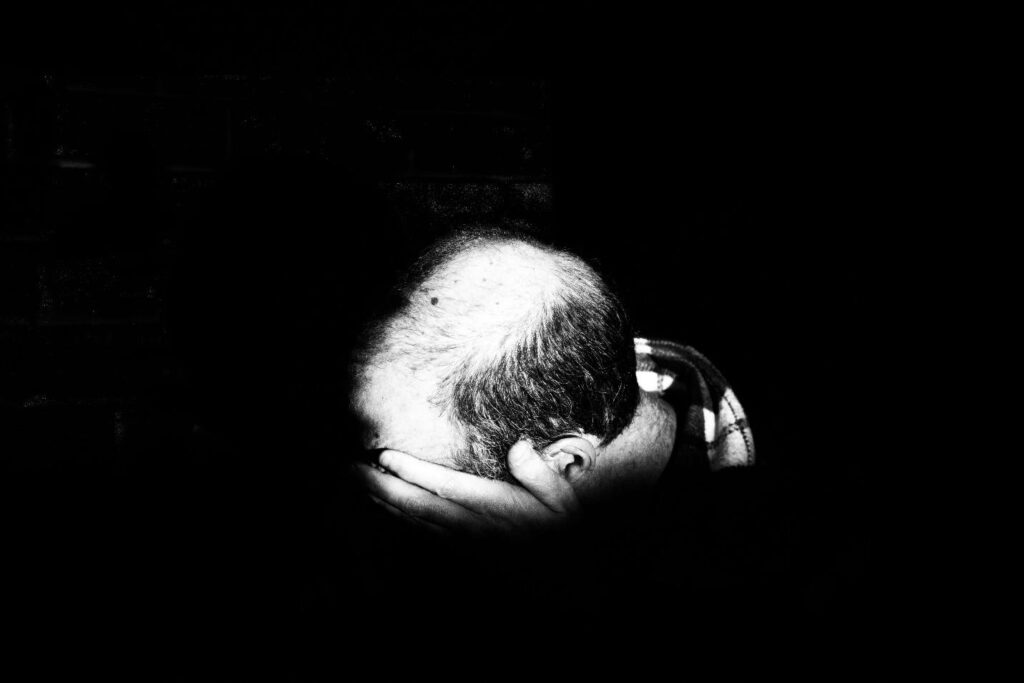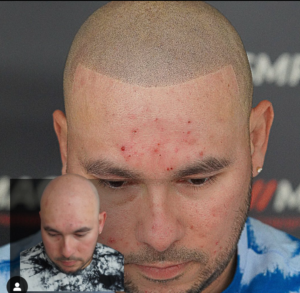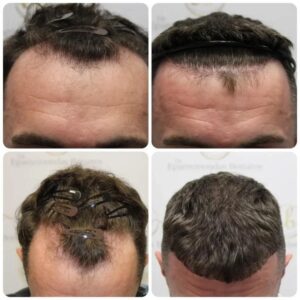As we begin to explore the topic of a balding crown, it’s essential to understand that hair loss is a common concern for many individuals, and the balding crown specifically can be a source of significant distress. In this comprehensive discussion, we will explore the what, why, and how of balding crowns, addressing its causes, impact on self-esteem, prevention strategies, treatment options, lifestyle changes, and embracing and managing them. By the end of this article, you will gain a deeper understanding and practical insights into dealing with the challenges posed by a balding crown.
Table of Contents
Key Takeaway:
Addressing the challenges of a balding crown involves a comprehensive approach covering causes, self-esteem impact, prevention, treatment options, lifestyle changes, and embracing the condition.
Recognizing early signs is crucial, and a holistic strategy, including genetics, hormonal balance, and environmental factors, is key. Preventive measures, diverse treatments, and lifestyle adjustments can mitigate progression.
Embracing a balding crown requires reframing perceptions and seeking support. Overall, a well-informed, proactive approach fosters resilience and empowerment in navigating this common concern.
What is a Balding Crown?
A balding crown, also known as vertex baldness or androgenic alopecia, refers to the gradual thinning and loss of hair at the top of the scalp. This type of hair loss often starts with a small, circular bald patch and gradually expands over time.
One common sign of male pattern baldness, specifically androgenetic alopecia, is the thinning crown, often accompanied by a bald spot on the crown. Recognizing these early signs of balding prompts individuals to explore various hair loss treatments, including crown hair transplant, as a way to address the side effects of male pattern hair loss.
It is a common pattern of hair loss among men and women, with the hair at the crown becoming finer and sparser, eventually leading to noticeable balding. The balding crown can significantly impact one’s appearance and self-confidence, prompting individuals to seek practical solutions to address this concern.
The process of balding crowns is often attributed to a combination of genetic, hormonal, and environmental factors. Genetics play a pivotal role in determining an individual’s susceptibility to balding crowns, with a family history of hair loss as a significant risk factor.
Additionally, hormonal imbalances, particularly elevated levels of Dihydrotestosterone (DHT), can contribute to the miniaturization of hair follicles at the crown, leading to their gradual shrinkage and eventual cessation of hair growth.
Environmental factors such as stress, poor nutrition, and certain medical conditions can also exacerbate the progression of a balding crown. We will look at the leading causes of this hair loss shortly.
Did You Know?
- According to the American Hair Loss Association, about 85% of men will experience some degree of hair loss by age 50.
- About 40% of women will experience some degree of female pattern hair loss by age 50.
- Balding Crown is more common in men with a family history of hair loss.
- Balding Crown is also more common in men who have low levels of testosterone.
What Causes Balding Crowns
Understanding a balding crown’s underlying causes is crucial in effectively addressing this issue. Genetic predisposition, particularly the presence of specific gene variants associated with hair loss, can significantly increase the likelihood of experiencing a balding crown. These genetic factors influence the sensitivity of hair follicles to the hormone DHT, leading to their progressive miniaturization and eventual dormancy. Hormonal imbalances, specifically elevated levels of DHT, can accelerate the hair follicle miniaturization process, contributing to the onset and progression of balding crowns.
In addition to genetic and hormonal factors, certain lifestyle choices and environmental influences can also contribute to the balding crown. Chronic stress, poor dietary habits, smoking, and exposure to environmental pollutants can negatively impact hair health and contribute to the progression of balding crowns.
Furthermore, underlying medical conditions such as thyroid disorders, autoimmune diseases, and scalp infections can exacerbate hair loss at the crown, highlighting the multifactorial nature of this issue.
Addressing these underlying causes and risk factors is vital in taking proactive steps to mitigate the impact of balding crowns on hair health.
Signs and Symptoms of Balding Crown
Recognizing the signs and symptoms of balding crown is crucial for early intervention and effective management. The initial manifestation of a balding crown often involves the gradual thinning of hair at the vertex, accompanied by increased scalp visibility in this area. As the condition progresses, individuals may notice the formation of a distinct bald patch at the crown, characterized by the absence of hair follicles and a smooth, shiny appearance of the scalp.
Hair strands in the affected area may become finer and more fragile, leading to reduced coverage and density at the crown.
People experiencing balding crowns may also observe increased hair shedding and reduced hair volume, particularly at the top of the scalp. The progressive nature of balding crowns can result in a noticeable change in hair texture and coverage, prompting individuals to seek practical solutions to address this concern.
Remaining vigilant and attentive to these signs will help initiate timely interventions to minimize the impact of the balding crown and explore suitable treatment options to manage this condition effectively.
Impact of Balding Crown on Self-Esteem
The impact of a balding crown extends beyond its physical manifestations, often affecting an individual’s self-esteem and emotional well-being. Hair loss can significantly alter one’s appearance and perception of self-image, leading to feelings of self-consciousness and reduced confidence.
The visibility of a balding crown can evoke concerns about aging, attractiveness, and social acceptance, contributing to heightened levels of stress and anxiety in affected individuals.
Moreover, the societal emphasis on a full head of hair as a symbol of youth and vitality can further exacerbate the psychological impact of balding crown, fostering a sense of insecurity and diminished self-worth.
People experiencing balding crowns may be preoccupied with concealing the affected area, limiting their hairstyle choices, and feeling apprehensive about public scrutiny. These emotional challenges highlight the need for holistic support and effective coping strategies to address the psychological impact of balding crowns and enhance individuals’ overall well-being.
How to Prevent Balding Crown
While genetic predisposition plays a significant role in the development of balding crowns, adopting preventive measures can help to mitigate its progression and preserve hair health.
Maintaining a balanced and nutritious diet rich in essential vitamins, minerals, and protein is crucial for promoting optimal hair growth and minimizing the impact of hair loss. Incorporating leafy greens, fruits, lean proteins, and healthy fats can support overall hair health and resilience.
Furthermore, practicing stress management techniques, such as meditation, yoga, and deep breathing exercises, can help mitigate the detrimental effects of chronic stress on hair follicles and minimize the progression of balding crowns.
Avoiding tobacco use and limiting exposure to environmental pollutants can also contribute to preserving the integrity of hair follicles and reducing the risk of accelerated hair loss. We can take meaningful steps towards preventing or slowing down the progression of the balding crown by prioritizing holistic wellness and adopting proactive lifestyle choices.
Balding Crown Treatment Options
Exploring effective treatment options is pivotal in addressing balding crown and promoting hair regrowth in the affected area. Topical minoxidil, an over-the-counter medication, has been widely used to stimulate hair follicles and promote hair growth, particularly at the crown. This solution can be applied directly to the scalp, encouraging the revitalization of dormant hair follicles and increasing hair density over time.
Additionally, prescription oral medications, such as Finasteride, can help inhibit the conversion of testosterone to DHT, thereby reducing the hormonal influence on hair follicle miniaturization and supporting hair regrowth at the crown.
For individuals seeking more advanced interventions, hair transplant procedures offer a long-term solution for addressing balding crowns. This surgical approach involves transplanting healthy hair follicles from donor areas, typically the back of the scalp, to the balding crown, restoring natural hair coverage and density.
Furthermore, Low-Level Laser Therapy (LLLT) devices and Platelet-Rich Plasma (PRP) treatments have shown promise in promoting hair regrowth and enhancing the overall health of hair follicles at the crown. Consulting with qualified healthcare professionals is advised to explore personalized treatment plans tailored to different people’s unique needs and hair restoration goals.

Photo by Sholto Ramsay on Unsplash
Lifestyle Changes for Managing Balding Crown
Adopting proper lifestyle changes can complement treatment efforts and contribute to the effective management of balding crowns. Regular scalp massages using nourishing oils, such as coconut or castor oil, can enhance blood circulation to the scalp, nourish hair follicles, and promote hair growth at the crown.
Additionally, adopting a gentle hair care routine that minimizes heat styling tools and harsh chemical products can help preserve the strength and vitality of existing hair while minimizing further damage to the affected area.
Embracing a proactive approach to scalp care and overall well-being can also involve incorporating essential vitamins and supplements that support hair health. Biotin, vitamin D, and omega-3 fatty acids are renowned for their contributions to hair strength and growth, making them valuable additions to an individual’s daily supplementation regimen.
Furthermore, regular physical activity and adequate sleep are crucial in promoting overall wellness and supporting optimal hair health, creating a holistic foundation for managing balding crowns and fostering resilience in the face of hair loss.
Embracing Balding Crown
Embracing the presence of a balding crown involves cultivating a positive mindset and reframing one’s perception of beauty and self-confidence. Rather than viewing hair loss as a detriment to one’s appearance, individuals can embrace a balding crown as a unique aspect of their identity, reflecting their journey and resilience in the face of challenges.
Exploring diverse hairstyles, including shorter cuts and strategic hair styling techniques, can empower individuals to showcase their confidence and individuality, transcending societal norms and expectations.
Moreover, seeking support from peers, support groups, and mental health professionals can provide valuable insights, encouragement, and coping strategies for navigating the emotional impact of balding crowns. Open conversations about hair loss and self-image can foster a sense of community and solidarity, empowering individuals to embrace their balding crown with grace and confidence.
FAQs
Can you fix the balding crown?
Yes, balding crowns can be addressed through various treatment options, including topical medications, oral prescriptions, hair transplant procedures, and advanced therapies such as LLLT and PRP treatments. Consulting with qualified healthcare professionals can provide individuals with personalized solutions to address their balding crown effectively.
Can you regrow hair on the crown?
Hair regrowth at the crown is achievable through targeted treatment approaches, such as minoxidil, finasteride, hair transplant surgery, and supportive therapies like scalp massages and essential nutrient supplementation. By addressing the underlying causes of balding crown and promoting hair follicle revitalization, individuals can experience noticeable improvements in hair density and coverage at the crown.
What causes hair loss at the crown?
Genetic predisposition, hormonal imbalances, and environmental factors primarily influence hair loss at the crown. Genetic variants associated with hair loss, elevated levels of DHT, chronic stress, poor nutrition, and certain medical conditions can collectively contribute to the progression of balding crown.
Should I shave my head if my crown is balding?
The decision to shave one’s head in response to a balding crown is a personal choice. While some people may find empowerment and confidence in embracing a shaved head, others may prefer to explore hair restoration options and hairstyles that complement their balding crown. It is essential to consider one’s preferences, comfort level, and desired approach to self-expression when making this decision.
Final Thoughts
The challenges posed by a balding crown encompass multifaceted dimensions, including its physical manifestations, emotional impact, and societal perceptions. Gaining a comprehensive understanding of the what, why, and how of balding crown can help navigate this experience with informed perspectives and proactive strategies.
From prevention and treatment options to lifestyle changes and embracing balding crown, this guide provides valuable insights and practical guidance for addressing this common concern. Ultimately, by fostering a culture of self-acceptance, seeking personalized support, and exploring effective interventions, people can navigate the journey of balding with resilience, confidence, and empowerment.


